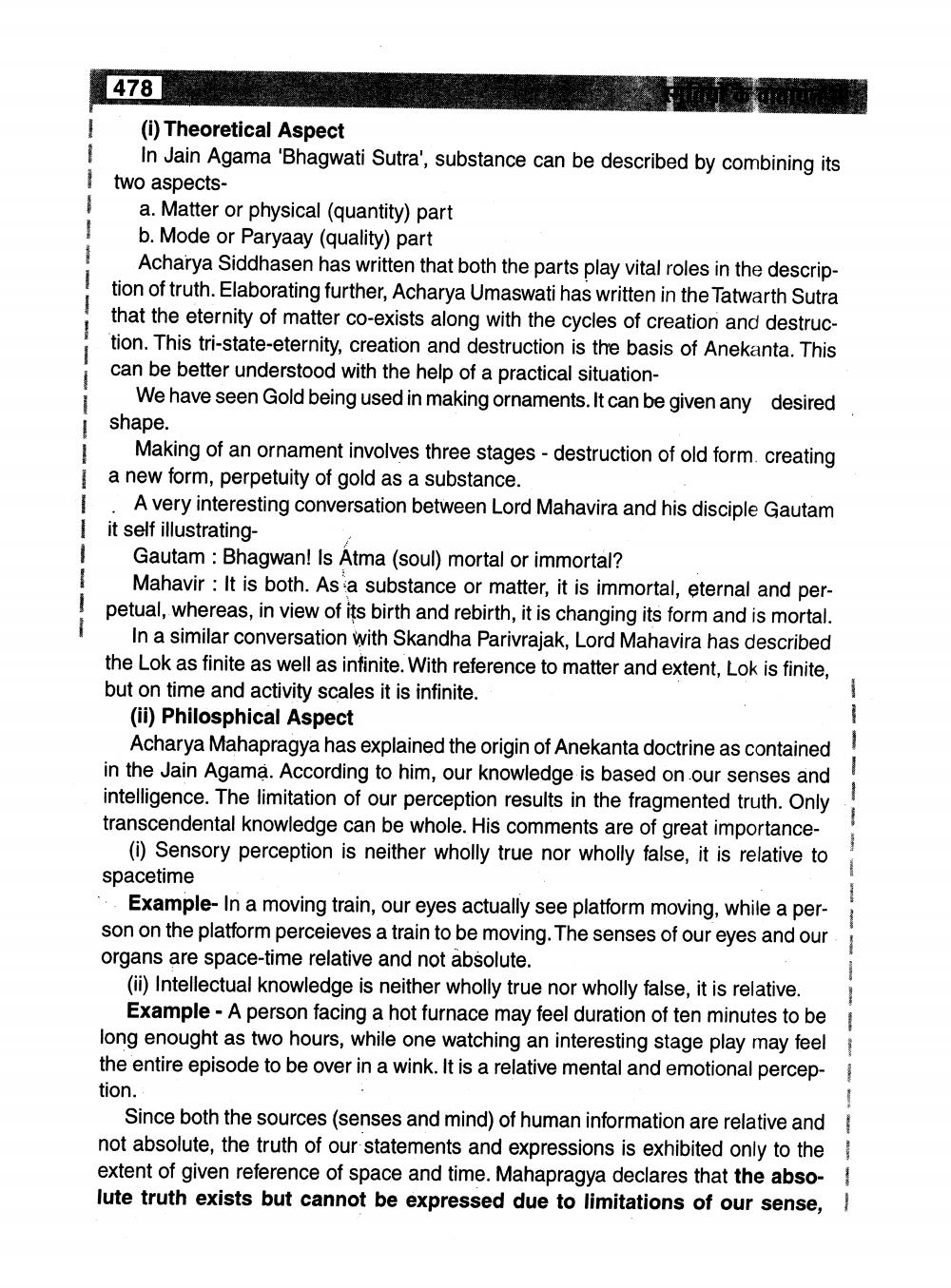________________
478
T (i) Theoretical Aspect 1 In Jain Agama 'Bhagwati Sutra', substance can be described by combining its two aspects
a. Matter or physical (quantity) part b. Mode or Paryaay (quality) part
Acharya Siddhasen has written that both the parts play vital roles in the description of truth. Elaborating further, Acharya Umaswati has written in the Tatwarth Sutra that the eternity of matter co-exists along with the cycles of creation and destruction. This tri-state-eternity, creation and destruction is the basis of Anekanta. This can be better understood with the help of a practical situation
We have seen Gold being used in making ornaments. It can be given any desired shape.
Making of an ornament involves three stages - destruction of old form. creating I a new form, perpetuity of gold as a substance. | A very interesting conversation between Lord Mahavira and his disciple Gautam 1 it self illustrating
Gautam : Bhagwan! Is Atma (soul) mortal or immortal?
Mahavir : It is both. As a substance or matter, it is immortal, eternal and perpetual, whereas, in view of its birth and rebirth, it is changing its form and is mortal.
In a similar conversation with Skandha Parivrajak, Lord Mahavira has described the Lok as finite as well as infinite. With reference to matter and extent, Lok is finite, but on time and activity scales it is infinite.
(ii) Philosphical Aspect
Acharya Mahapragya has explained the origin of Anekanta doctrine as contained in the Jain Agama. According to him, our knowledge is based on our senses and intelligence. The limitation of our perception results in the fragmented truth. Only transcendental knowledge can be whole. His comments are of great importance
(i) Sensory perception is neither wholly true nor wholly false, it is relative to spacetime
Example- In a moving train, our eyes actually see platform moving, while a person on the platform perceieves a train to be moving. The senses of our eyes and our organs are space-time relative and not absolute.
(ii) Intellectual knowledge is neither wholly true nor wholly false, it is relative.
Example - A person facing a hot furnace may feel duration of ten minutes to be long enought as two hours, while one watching an interesting stage play may feel the entire episode to be over in a wink. It is a relative mental and emotional perception.
Since both the sources (senses and mind) of human information are relative and ! not absolute, the truth of our statements and expressions is exhibited only to the extent of given reference of space and time. Mahapragya declares that the abso- ! lute truth exists but cannot be expressed due to limitations of our sense,




